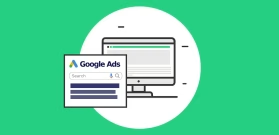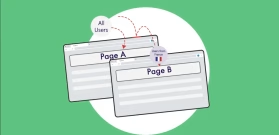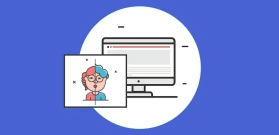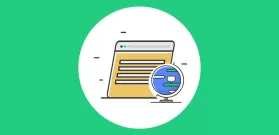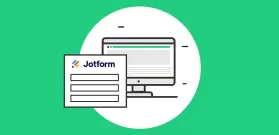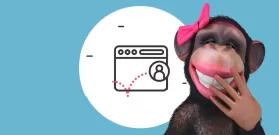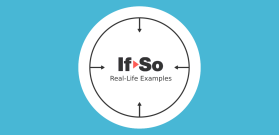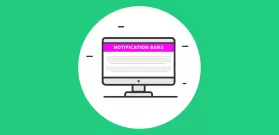Location-Based Calls-to-Action

Getting your audience to notice you can feel like chasing a moving target. With precise, location-based calls-to-action and messaging, reaching your audience is not just possible but also highly effective.
These prompts leverage geolocation technology to deliver personalized experiences that engage users and drive conversions. They help you make a stronger bond from the start, delivering the right message at precisely the right moment.
Without further ado, here’s how to make location-based calls-to-action work for you…
What Are Location-Based Calls-to-Action?
Location-based calls-to-action (CTAs) are marketing tools that target users based on their location. Unlike traditional CTAs, which are often generic, these prompts provide a personalized experience by considering where the audience is at any given moment.
By using geolocation technology, you can create timely and relevant messages. For instance, you can direct visitors to the closest branch or show a personalized message to visitors from specific locations. This improves user engagement and encourages potential customers to take action.
The key is relevance. When people feel that a message speaks directly to them, they’re far more likely to respond positively.
Examples of Location-Based CTA
Location-based calls-to-action can drive engagement in various scenarios. They are quite versatile, and you can use them across different sectors. Let’s look at the many use cases that might be relevant to you.
E-commerce Promotions
E-commerce promotions can benefit a lot from location-based calls-to-action. You can create a more personalized shopping experience by tailoring your offer to specific regions. This way, you can offer specific discounts on local holidays or leverage local sports events to drive the sales of related products.
You can also take advantage of seasonal promotions. Think about targeting customers in colder climates with winter gear specials while those in warmer areas see beachwear discounts. All this can lead to higher engagement rates and brand loyalty.
Additionally, location-specific messaging creates urgency and relevance that generic promotions often lack.
Event Announcements
Event announcements are a perfect opportunity to engage your audience with location-based calls-to-action. For instance, you can dynamically display an event’s time based on the user’s timezone. This way, you can ensure that nobody will miss out on your webinar or a product promotion.
Additionally, you can integrate local landmarks in your messaging to enhance relevance. For instance, by adding nearby attractions or public transport options, you can encourage spontaneous attendance.
Language Preferences
Adjusting your content to match the languages spoken in specific regions creates a welcoming atmosphere for visitors. For example, if your business operates in areas with diverse populations, you can offer multilingual options to boost engagement. Users are more likely to interact with content that feels familiar and accessible.
Additionally, language-based CTAs can drive conversions effectively. Customers feel valued and understood when they see messages in their preferred language. This personal touch can increase loyalty and encourage repeat visits.
Travel and Tourism
Location-based calls-to-action can help travel and tourism businesses engage with potential customers. Imagine a traveler seeing a personal message, such as “Welcome to {City}! Discover top-rated attractions near you!”
Furthermore, you can point out discounts on trips from the city where the user comes from to other destinations. You can also offer weekend getaways near their city or popular destinations for a person from a certain country.
All this can create a more personalized experience when users visit your website, making them more likely to continue with the purchase.
Location-Based CTAs to Drive User Engagement
Location-based CTAs can significantly increase user engagement. By tailoring your messages to users in specific geographic areas, you can appear more relevant to your audience. This relevance often leads to higher conversion rates.
Additionally, these CTAs create a personalized experience. When customers feel that content is made directly for them, they are more likely to take action. Moreover, location-based CTAs help drive foot traffic to physical stores or events. They also enable brands to deliver timely information based on local trends or seasons.
How to Implement Location-Based CTAs Effectively
There are several ways to implement a location-based CTA effectively. Here’s what to do:
- Use geolocation tools,
- Optimize with A/B testing,
- Create a sense of urgency.
You should also avoid common pitfalls, such as overloading visitors with too many CTAs at once. Keep it simple and focused to get better results.
Use Geolocation Tools
Geolocation tools allow businesses to pinpoint where their users are and tailor the experience. Integrating this tool into your website allows you to serve highly relevant content based on the user’s physical location. This might include local promotions, nearby store information, or services specific to their area.
If-So offers a simple-to-install geolocation plugin that you can use to tailor content based on a continent, country, state, city, and even timezone. The setup is quite straightforward. You only need to open the WordPress dashboard and navigate to “If-So → Add New Trigger.” Then, you can select geolocation as a condition and add a list of locations to target.
Once you’re done, you can add the tailored content to the specified field and publish it. That’s it. You’re just a few steps away from targeting your audience with a personal message!
A/B Testing for Optimization
A/B testing is an excellent method for optimizing location-based calls-to-action. By comparing two variations of a CTA, you can discover what resonates best with your audience.
You should first create two distinct versions of your message. In one, you could emphasize urgency, while the other can focus on exclusivity. This will help you understand which approach drives more engagement. Click-through rates and conversion data will reveal valuable insights about user preferences.
Don’t forget to iterate based on your findings. The goal is not only to find out what works but also to adapt swiftly as customer behavior changes.
Create a Sense of Urgency
When people feel they might miss out on an opportunity, they’re more likely to take action. This is where If-So conditional countdowns come into play. You can use them as visual cues that show how much time is left to make the urgency tangible and real.
You can use a standard countdown that will count to a date and time you choose, a recurring countdown that is scheduled to display at specific dates, or a user-behavior countdown. This one starts counting back from the moment visitors navigate to a specific page or carry out a certain action (e.g., adding a product to the cart).
You can use these for seasonal promotions or exclusive deals tied to local events. This ties your call-to-action directly into what’s happening in the area at that moment, adding to its relevance.
Common Mistakes to Avoid with Location-Based CTAs
One frequent mistake you can make with location-based CTAs is not segmenting your audience accurately. If you send the same message to everyone, regardless of their specific location, you risk alienating potential customers who may feel that your offer isn’t relevant.
Another error involves ignoring local cultural nuances. What works in one region might not work in another. Always consider local traditions, holidays, and even language when creating your messages.
Don’t forget to track and analyze results post-implementation. Failure to assess your CTAs’ performance means you’ll have a harder time improving future campaigns effectively.
For more information about location-based content, visit the If-So website. We’ll be happy to answer all your questions and help you maximize the results of location-based CTAs.
FAQ
1. How do location-based CTAs improve customer experience on the website?
Location-based CTAs personalize your customers’ browsing experience. With these, you can be sure that customers will see content in their preferred language, see the right offer at the right time, and know exactly when a certain event is happening according to their location.
2. Where should I place a location-based CTA for it to be the most effective?
Since most people don’t read an entire web page, you should place your CTA at the beginning and end of the page. This is how you’ll ensure to maximize the potential of location-based call-to-action and be relevant to your audience.
